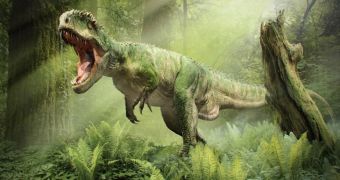A team of scientists writing in a recent issue of the journal PLOS Biology claim that we, humans, share the planet with about 10,000 different species of dinosaurs, except not in a Jurassic Park kind of way.
On the contrary, these researchers explain that the dinosaurs that still roam the Earth are miniaturized forms of the beasts whose fossils keep showing up in various parts of the globe.
What's more, it turns out that folks are well acquainted with these tiny dinosaurs that have made it through the ages and that are still alive today. Thus, the dinosaurs scientists are talking about are birds.
“Dinosaurs aren't extinct. There are about 10,000 species alive today in the form of birds,” argues Dr. Robert Benson, a vertebrate paleontologist with the Oxford University in the United Kingdom, as cited by Phys Org.
Dr. Robert Benson and fellow researchers base their claim that miniaturized dinosaurs still walk among us on information obtained while studying the evolutionary trees of creatures that inhabited our planet about 250 million to 65 million years ago.
This information indicates that, shortly after making their debut in the biodiversity stage, dinosaurs quickly evolved into several different species whose shapes and sizes greatly varied in order to make the most of specific resources.
Of these species, many failed to keep up with changes in environmental conditions and eventually became extinct. The one group that did make it through the years is the one that continues to explore new ecologies and later brought birds to our planet.
Thus, during the mass extinction that occurred about 65 million years ago, small dinosaurs that were able to survive on little food and willing to continue adapting managed to survive and eventually made it all the way to modern times.
Specifically, Dr. Robert Benson and his colleagues argue that a clade of dinosaurs (for those unaware, a clade is a group of organisms made up of all the evolutionary descendants of a common ancestor) radiated a clade of birds, which later diversified and pretty much took over the world.
“Dinosaur body size evolved very rapidly in early forms, likely associated with the invasion of new ecological niches. In general, rates slowed down as these lineages continued to diversify,” says Dr. David Evans.
“But it's the sustained high rates of evolution in the feathered maniraptoran dinosaur lineage that led to birds – the second great evolutionary radiation of dinosaurs,” the Royal Ontario Museum in Canada researcher adds.
Based on fossil remains that have until now been discovered and analyzed, Dr. Robert Benson and fellow researchers estimate that the creatures that survived the mass extinction that took place 65 million years ago and whose descendants are still alive today might have been as small as modern sparrows.

 14 DAY TRIAL //
14 DAY TRIAL //